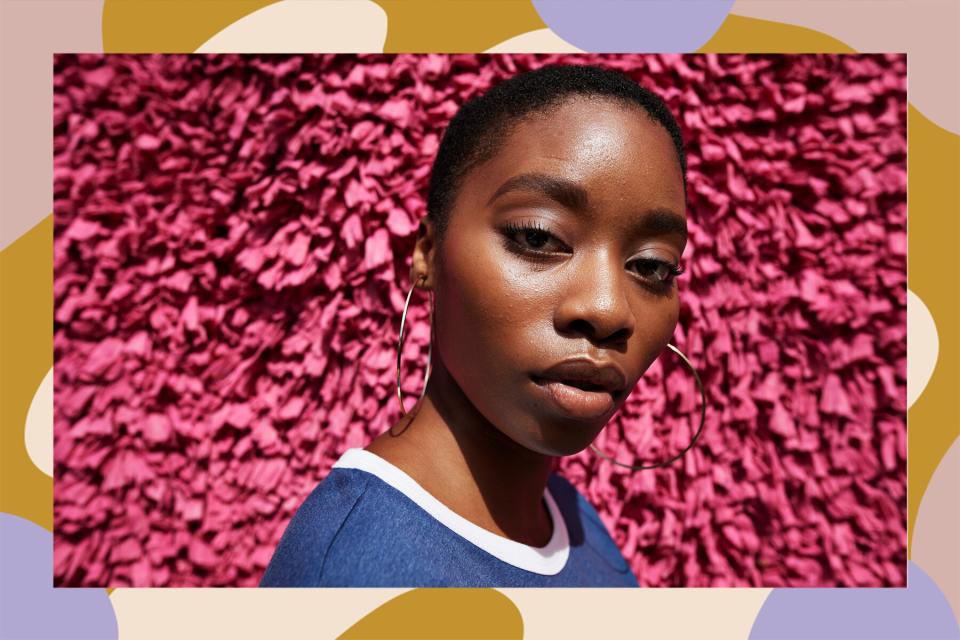Everything You Need to Know About the Big Chop, From Start to End

Getty Images
If you have naturally textured hair, you know that styling and caring for it can be a challenge. That's why we created The Curl Corner, a monthly column that celebrates the versatility of textured hair. Here, we cover everything from how to properly style your coils to how to protect them—and include expert tips for curl patterns of all types.
When I decided to go natural, I knew that a big chop was not an option for me—at least that's what I thought. I had just started considering going natural; it was already so new to me, and my desire to always have a substantial amount of hair was a major deterrent. So I decided to slowly transition instead of getting a big chop, meaning that I opted for getting small trims over time until all relaxed hair was gone. It took three years.
The process was long and frustrating. At times I wished that I had opted for doing the big chop instead. If you're thinking about going natural and are deciding how to do it, either by transitioning or doing the big chop, here's everything you need to know about both options, according to experts, so you can choose the best one for you.
Big chopping vs. transitioning:
"Slowly transitioning leaves room for split ends to slowly travel up your hair strand, damaging new growth," says Celine Bido Yasin, a texture hair expert at Maggie Rose Salon. "Big chopping is a lot easier to manage." She explains that if you slowly transition, you'll have to care for different textures, which often leads to a very irregular curl pattern.
"The benefits [of getting a big chop] are endless, starting with emotional and physical freedom of getting rid of damaged, chemically treated hair," says Michelle Sultan, a hairstylist and brand ambassador for Imbue Curls. "When my clients opt for a big chop, they are often surprised at how little effort it takes to have a good hair day. Wash-and-gos are easy, and the weather never affects how their hair turns out."
What to expect after the big chop:
Sultan says that whatever your texture appears to be during the new-growth phase is probably not what your true curl pattern is. "When someone big-chops, they can expect to find that their curl pattern is often a lot 'softer' than what they initially anticipated," she says. "Most people think that their hair is super tight and coily because the relaxer has given them the illusion that new growth is tighter or dryer than expected."
Misconceptions about the big chop:
"The big chop is not a protective style," Yasin says. "While it can be very helpful for keeping your hair manageable, minimizing manipulation, and preventing breakage, this is only the case if it is done correctly."
Contrary to popular belief, your hair won't actually grow faster. "However, because it is no longer brittle and breaking, it will grow healthier and give the appearance to be growing quicker than before because you're retaining more length," she says.
Hair maintenance is required.
There are no required physical attributes to qualify for the big chop. "You don't have to have a certain face shape," Yasin assures. "Finding a natural style that suits you and your face shape boils down to having a thorough consultation with your stylist and finding out what suits you."
How fast will your hair grow after the big chop?
Frankly, there's no real cut-and-dry answer here. "A realistic growth rate depends on many different factors, namely the health of the person, lifestyle, age, and nutrition," Sultan says. However, while there's no concrete answer, there is a standard: "About half an inch per month is an average amount of growth," Yasin says.
The best haircare products to use after the big chop:
"I would definitely begin by adding a clarifying shampoo into your routine once a month, since product buildup is the most common cause of hair loss and the prevention of hair growth," Yasin suggests. Additionally, Sultan suggests a complete overhaul of products for ones that align with the curly girl method (CGM). "This means using products that are approved for the CGM, which includes...products that are sulfate-free, paraben-free, free of wax-based silicones, and free of oils that can be potentially damaging to hair long term," she says.

 Yahoo Finance
Yahoo Finance 